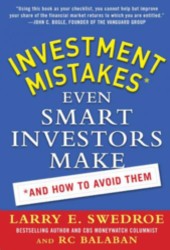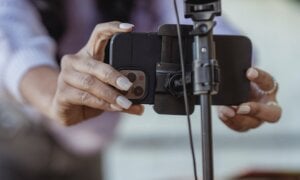

 Larry Swedroe’s new book, Investment Mistakes Even Smart Investors Make and How to Avoid Them
Larry Swedroe’s new book, Investment Mistakes Even Smart Investors Make and How to Avoid Them , includes 77 common behavioural blunders. I don’t think there’s anyone alive who hasn’t made at least a dozen of them. In fact, I know two investors who recently fell prey to Mistake 11—and one of them was me.
, includes 77 common behavioural blunders. I don’t think there’s anyone alive who hasn’t made at least a dozen of them. In fact, I know two investors who recently fell prey to Mistake 11—and one of them was me.
Mistake 11 in Swedroe’s catalogue goes like this: “Do You Let the Price Paid Affect Your Decision to Continue to Hold an Asset?” This error is what behavioural economists call the endowment effect. It’s what makes us place a greater value on something just because we happen to own it.
Imagine that you want to attend a hockey game. You don’t yet have a ticket, and you decide that you’re willing to pay no more than $100 for one. The next day, you win a ticket to the game in a radio contest. If a friend offers to buy that ticket from you, for what price would you be willing to sell?
If you were purely rational, you would accept any price over $100, since that’s the maximum value you placed on the ticket before you had one. But if you’re subject to the endowment effect, the ticket is likely to be worth much more to you now that you’ve got one. In one famous experiment, subjects said they were willing to pay a median of $150 to buy a ticket, but their median selling price was $1,500. Somehow simply owning the ticket increased its value tenfold.
Too cheap to sell, too expensive to buy
I recently spoke to an investor I’ll call Stephanie, who provided a perfect real-life example of this odd behaviour. Her advisor had purchased a small-cap energy company in her portfolio, and the stock had since lost over half its value. She wasn’t just bothered about the loss—she was also angry that the advisor had purchased the stock in the first place, since she wasn’t interested in speculating on junior resource companies.
“Why don’t you sell the shares and buy something more suitable?” I suggested.
“I think the stock might come back a bit,” Stephanie replied. “I’ll give it another six months or so.”
I thought about that for a second. “If you didn’t own this stock already, would you buy shares today?”
“Of course not,” she said. “Why would I do that? I just told you that risky stocks like this aren’t part of my strategy.”
You can probably spot the irrational thought process here. If she thought the stock was incompatible with her investing strategy, then she should have been prepared to sell all of her shares immediately. The fact that she already owned shares in the company should not have had any bearing on the decision. Indeed, if she truly thought the stock was going to go up in the next six months, why not buy more shares?
To avoid falling prey to the endowment effect, Swedroe suggests asking yourself: “If I didn’t already own the asset, how much would I buy today as part of my overall investment plan?” If your answer is “none” or “less than I currently own,” then you should sell the asset now and replace it with something that suits your long-term strategy. (One caveat, which Swedroe acknowledges: the decision to dump an inappropriate investment is not so simple if you’d face a large tax hit on the capital gains.)
Another real example
I can’t be smug about Stephanie making Mistake 11—I admit I’ve fallen prey to this cognitive error myself. When I set up my Complete Couch Potato RRSP in early 2009, I used the iShares S&P/TSX Capped REIT (XRE), since it was the only option for real estate at the time. The following year, the BMO Equal Weight REITs (ZRE) was launched, and it uses an equal-weight strategy that I believe is preferable for sector funds that include a small number of companies. That’s why I recommend ZRE it in my Model Portfolios.
If I was building my portfolio from scratch today, I would certainly use ZRE. But I confess I haven’t switched yet. It might have something to do with the fact that my position in XRE is up more than 84% based on my average price, which is pretty satisfying. But as Swedroe reminds us, the price I paid in the past is not relevant: it is far more important to hold the asset that is best suited to my long-term strategy going forward.
So next time I add money to my RRSP, I’m going replace XRE. In the future, I hope I’ll be less likely to fall victim to the endowment effect. Now it’s time to start working on the other 76 mistakes.
 Larry Swedroe’s new book,
Larry Swedroe’s new book, 










